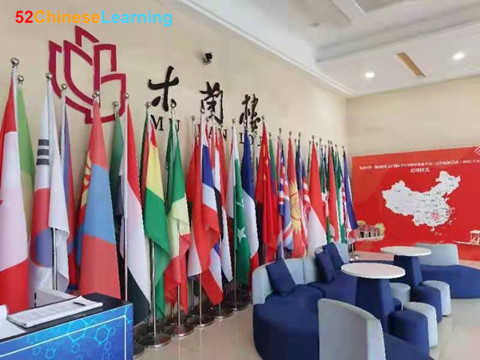链接复制成功!现在分享给好友吧。
Before I officially started teaching in public schools, I had been practicing in Mandarin Middle school. Consequently, I also accumulated experience in Chinese classes in Chinese schools and K12 schools. Today, I will share with you some of my personal experiences.
At first, Chinese schools are accustomed to learning Chinese for overseas Chinese children in the United States. Thus, in the early days, they were basically Chinese children taught by first-generation immigrants. Therefore, most of the methods utilized were traditional learning methods, such as memorizing texts, copying new words, and memorizing by heart.
But because their children are second-generation immigrants, they are more comfortable with the western approach to learning. Consequently, many children find Chinese middle schools boring. That stems from when early China was not so powerful, learning Chinese was not as fashionable as it is now. On weekends, non-Chinese children use weekends for leisure activities. They go to play, or play baseball and even ski.

On the other hand, Chinese children have to go to school to recite texts, copy new words, memorize them, etc. Those are not the weekends they sought for. Additionally, children consider using leisure time for school is laughable. For them, it’s not cool. This demotivates the students’ from learning. That is also the reason why Chinese language retention is poor.
However, with the development of time and the strong national strength, more and more Americans began to learn Chinese, and gradually some Americans began to send their children to Chinese schools. At this time, teachers began to recruit Chinese who knew American education, so the reputation of Chinese schools gradually improved.
However, there are still many volunteer Chinese local teachers who don’t necessarily have systematic teacher training. Regarding teaching, especially teaching Chinese, many people are misinformed., They always say that “Can’t a Chinese teach Chinese?” I can only smirk with dismay at these kinds of remarks. Sure it is a perfectly valid inference. After all, Chinese speakers can definitely teach non-Chinese speakers. However, that is not the point. It is whether the teaching is good or bad. There is still a big difference in the effect of teaching by professionally trained teachers. Therefore, the level of Chinese schools in different places is uneven, and it is difficult to generalize. There are some good ones and some bad ones. Although the diversity of students has improved, Chinese students are the main ones.
Let’s talk about the Chinese course in the K-12 education system. The K-12 education system in the United States is mainly divided into three categories: public schools, private schools, and charter schools. Among them, public schools basically need teacher qualification certificates to be employed, and the latter two are also the priority of certification. It doesn’t matter whether it’s ABC in America or foreign students from China who want to teach in public schools.
An aspiring teacher must undergo intensive training first. First of all, you have to attend a teacher qualification program for one and a half to two years to receive training certification. The content of that training is basically how to teach with American education methods. Including educational psychology, classroom management, how to assess, how to teach the subjects, internships, etc.
In fact, there are two kinds of Chinese teaching: ordinary Chinese class and immersion Chinese teaching. The difference is that immersion in Chinese is not only about teaching language and culture. It also considers the parallelism of applying Chinese to life and study. It covers a wide array of topics such as Chinese literature, mathematics, natural science, social science, etc., to create an immersive learning atmosphere.
Let’s talk about ordinary Chinese classes first, that is, pure language and culture learning. This kind of Chinese class is usually held in high school or junior high school. However, it’s not that prevalent in primary school. The class hours are different every week, from once a week to five times a week, from one and a half hours to one hour.
Let’s talk about immersion Chinese teaching. Generally, it is opened in kindergartens and primary schools, and then students go up to junior high school. Generally, half or more than half of the class hours a day are taught in Chinese (not only in Chinese literature but also in Chinese literature, mathematics, natural science, etc.).Therefore, it exposes students to a Chinese learning atmosphere. From the time point of view, the stimulus is much longer than ordinary Chinese lessons, and because students start learning at a younger age, the effect will be better.
Teaching in Chinese Middle schools requires fewer teachers than in public schools, private schools, and charter schools. In these environments, the majority of the population are Chinese children. Teaching in K-12 schools depends on whether to teach pure Chinese or immerse in Chinese. There are many aspects to consider, such as different standards and evaluation methods.
Finally, I’d like to explain in particular that the fundamental difference is that the requirements for recruiting teachers in Chinese schools are different from those in K-12, so there will still be some differences in actual teaching.
Your first 1-on-1 Chinese lesson offer